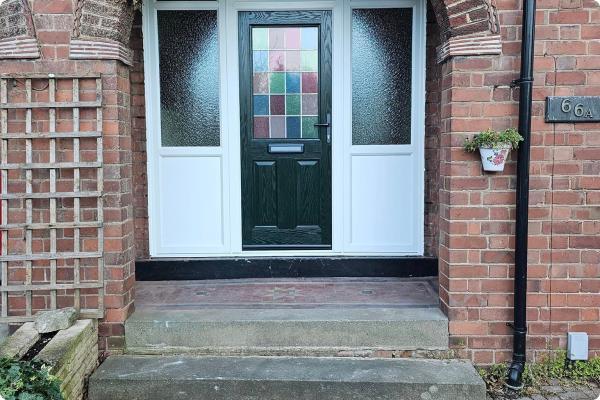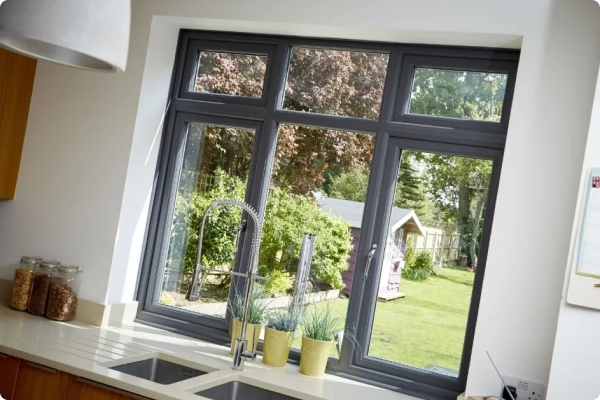When choosing a roofing material, homeowners and businesses are increasingly looking for options that are not only durable but also environmentally friendly. Rubber flat roofs have gained popularity as a sustainable roofing solution that offers longevity, energy efficiency, and recyclability.
At Energy Windows, we believe in providing roofing solutions that not only protect your property but also contribute to a healthier planet. In this blog, we’ll explore why rubber flat roofs are considered an eco-friendly choice and how they can benefit both the environment and your wallet.
Made from Recycled and Sustainable Materials
One of the biggest environmental advantages of rubber flat roofs is that they are made from recycled materials. Many rubber roofing systems, particularly those using EPDM (ethylene propylene diene monomer), are manufactured from recycled rubber, such as old tires and other post-consumer waste. This helps reduce landfill waste and minimizes the need for new raw materials, making it a more sustainable option compared to traditional roofing materials like asphalt.
Additionally, some manufacturers incorporate sustainable production processes, reducing carbon emissions during manufacturing. By choosing a rubber flat roof, you’re not only selecting a durable material but also supporting a more circular economy where materials are reused instead of discarded.
Exceptional Longevity and Durability
The longer a roof lasts, the less frequently it needs to be replaced, reducing the demand for new materials and lowering overall waste. Rubber flat roofs have an impressive lifespan, often lasting 30 to 50 years with proper maintenance. This is significantly longer than traditional flat roofing materials like asphalt, which typically need replacement every 15 to 20 years.
Rubber roofs are highly resistant to harsh weather conditions, including UV rays, extreme temperatures, heavy rain, and snow. Their durability means fewer repairs and replacements, which translates to a smaller environmental footprint over time. By investing in a long-lasting roofing solution, property owners contribute to sustainability by reducing the number of discarded materials in landfills.
Energy Efficiency and Insulation Benefits
A rubber flat roof can help improve energy efficiency by reflecting sunlight and reducing heat absorption. This keeps indoor spaces cooler in the summer, reducing the need for excessive air conditioning and lowering energy consumption. In the winter, rubber roofs provide effective insulation, helping to retain heat and reduce heating costs.
Additionally, some rubber roofing systems can be paired with reflective coatings or cool roof technology to further enhance their energy-saving capabilities. A well-insulated, energy-efficient roof reduces the overall carbon footprint of a building, making it an environmentally responsible choice.
100% Recyclable at the End of Its Life Cycle
Unlike many traditional roofing materials that end up in landfills after removal, rubber flat roofs can be fully recycled. When a rubber roof reaches the end of its lifespan, the material can be repurposed into new roofing products, industrial materials, or even playground surfaces. This reduces waste and ensures that valuable resources are reused rather than discarded.
Recyclability is a crucial factor in sustainability, as it minimizes environmental impact and supports eco-conscious building practices. Choosing a roofing material that can be recycled instead of replaced with new raw materials helps conserve natural resources and reduces pollution.
Compatible with Green Roof Systems
For property owners looking to take sustainability a step further, rubber flat roofs are an excellent foundation for green roofing systems. A green roof involves the addition of vegetation, soil, and drainage layers, creating a living roof that provides environmental benefits such as improved air quality, natural insulation, and stormwater management.
Because rubber roofs are lightweight, flexible, and waterproof, they work well as a base for green roofs, allowing homeowners and businesses to create environmentally friendly rooftop spaces. Whether used for growing plants, supporting solar panels, or improving insulation, rubber roofing systems offer a versatile solution for eco-conscious property owners.
Low Maintenance and Fewer Harmful Chemicals
Maintaining a rubber flat roof requires minimal upkeep, which reduces the need for chemical-based treatments or frequent repairs that may involve hazardous materials. Unlike some roofing options that require harsh sealants or coatings to maintain their integrity, rubber roofs naturally resist mold, mildew, and UV damage without the need for excessive chemical treatments.
This not only benefits the environment but also makes rubber roofing a healthier choice for homeowners who want to avoid exposure to harmful chemicals commonly found in other roofing materials.
Final Thoughts: A Smart Choice for Sustainability
Rubber flat roofs offer a combination of durability, energy efficiency, recyclability, and minimal environmental impact, making them one of the most sustainable roofing options available today. By choosing a rubber roof, property owners can reduce landfill waste, lower energy consumption, and contribute to a more eco-friendly future.
At Energy Windows, we are committed to providing roofing solutions that align with modern sustainability standards. Whether you’re looking for a long-lasting, low-maintenance roof or want to make an environmentally responsible choice, a rubber flat roof is a smart investment.
If you’re interested in installing a rubber flat roof or have questions about sustainable roofing solutions, contact us today. Our team is ready to help you find the best eco-friendly roofing option for your home or business.









